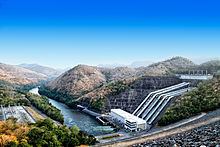Opening date 1980 Construction began 1974 | Status In use Type of dam Embankment | |
 | ||
Location Si Sawat District of Kanchanaburi Province Similar Vajiralongkorn Dam, Erawan waterfall, Erawan National Park, River Kwai bridge, Mueang Sing Historical | ||
Fpv quadcopter tbs discovery wat khao wong phra chan srinagarind dam thailand dragon link
The Srinagarind Dam (also known as the Srinakarin Dam; Thai: เขื่อนศรีนครินทร์; rtgs: Khuean Sinakharin) is an embankment dam on the Khwae Yai river in Si Sawat District of Kanchanaburi Province, Thailand. The main purpose of the dam is river regulation and hydroelectric power generation. The dam's power station has a 720 megawatts (970,000 hp) capacity of which 360 megawatts (480,000 hp) is pumped storage.
Contents
- Fpv quadcopter tbs discovery wat khao wong phra chan srinagarind dam thailand dragon link
- Map of Srinakarin Dam Tambon Tha Kradan Amphoe Si Sawat Chang Wat Kanchanaburi 71250 Thailand
- BackgroundEdit
- DesignEdit
- References
Map of Srinakarin Dam, Tambon Tha Kradan, Amphoe Si Sawat, Chang Wat Kanchanaburi 71250, Thailand
BackgroundEdit
Feasibility studies for the dam were carried out between May 1967 to May 1969 and designs between September 1970 to December 1977. Initial construction on the dam began in 1974 and it was complete in 1980. The first of the dam's generators was commissioned in 1980 and the last by 1991. The original cost of the dam was estimated to be $45 million but because the dam was constructed on a fault line, the dam's foundation had to be reinforced which raised the cost to $114 million.
DesignEdit
The Srinagarind Dam is a 140 metres (460 ft) tall and 610 metres (2,000 ft) long embankment dam. It withholds a reservoir with a capacity of 17,745 million cubic metres (14.386×10^6 acre·ft). The dam's power station has an installed capacity of 720 MW and contains three 120 megawatts (160,000 hp) Francis turbines and two 180 MW Francis pump-turbines. The pump-turbines serve the dam's pumped-storage capability and generate electricity during peak hours. In off-peak hours, the pump turbines return water from the lower reservoir back into the upper reservoir.
